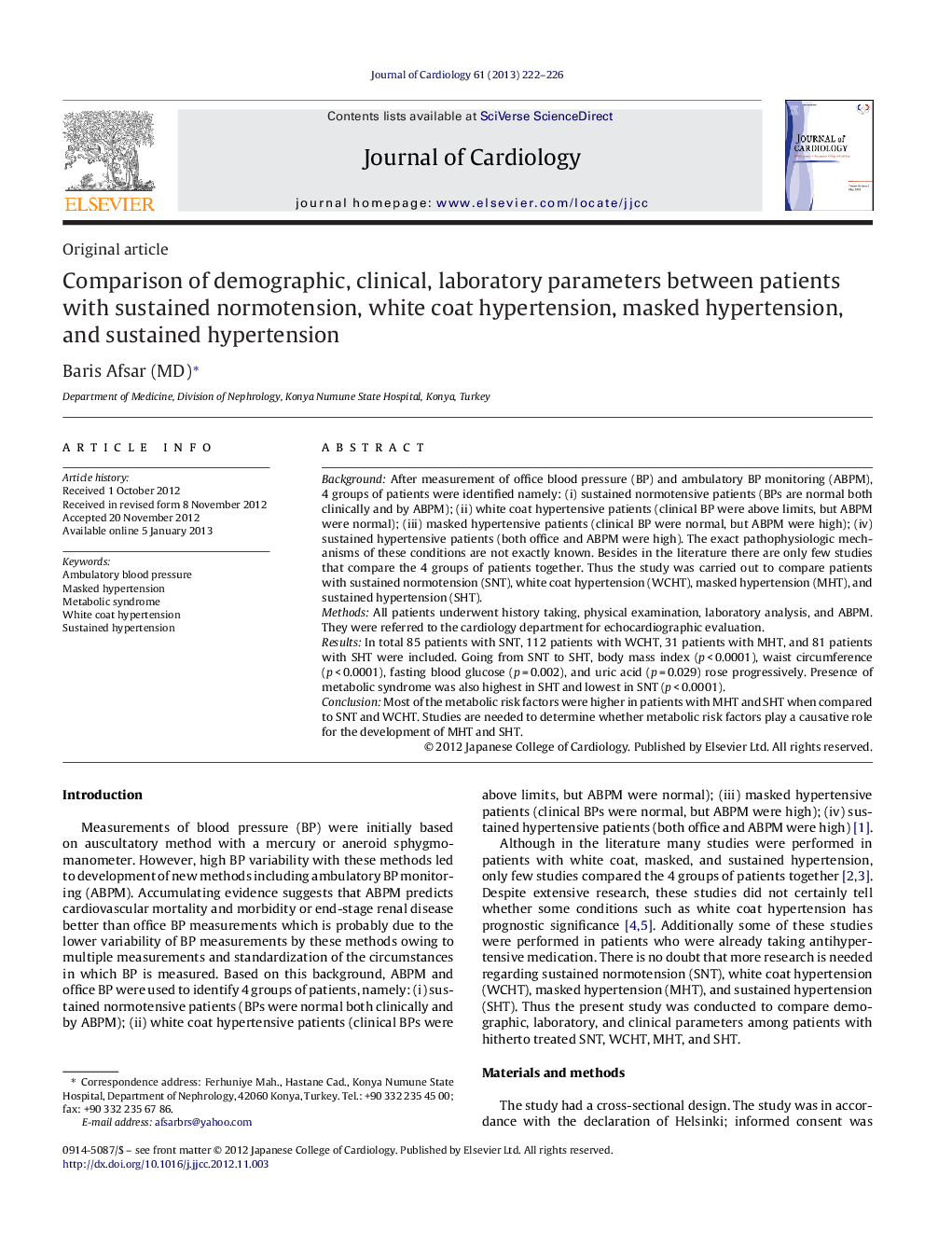| Article ID | Journal | Published Year | Pages | File Type |
|---|---|---|---|---|
| 5984273 | Journal of Cardiology | 2013 | 5 Pages |
BackgroundAfter measurement of office blood pressure (BP) and ambulatory BP monitoring (ABPM), 4 groups of patients were identified namely: (i) sustained normotensive patients (BPs are normal both clinically and by ABPM); (ii) white coat hypertensive patients (clinical BP were above limits, but ABPM were normal); (iii) masked hypertensive patients (clinical BP were normal, but ABPM were high); (iv) sustained hypertensive patients (both office and ABPM were high). The exact pathophysiologic mechanisms of these conditions are not exactly known. Besides in the literature there are only few studies that compare the 4 groups of patients together. Thus the study was carried out to compare patients with sustained normotension (SNT), white coat hypertension (WCHT), masked hypertension (MHT), and sustained hypertension (SHT).MethodsAll patients underwent history taking, physical examination, laboratory analysis, and ABPM. They were referred to the cardiology department for echocardiographic evaluation.ResultsIn total 85 patients with SNT, 112 patients with WCHT, 31 patients with MHT, and 81 patients with SHT were included. Going from SNT to SHT, body mass index (p < 0.0001), waist circumference (p < 0.0001), fasting blood glucose (p = 0.002), and uric acid (p = 0.029) rose progressively. Presence of metabolic syndrome was also highest in SHT and lowest in SNT (p < 0.0001).ConclusionMost of the metabolic risk factors were higher in patients with MHT and SHT when compared to SNT and WCHT. Studies are needed to determine whether metabolic risk factors play a causative role for the development of MHT and SHT.
